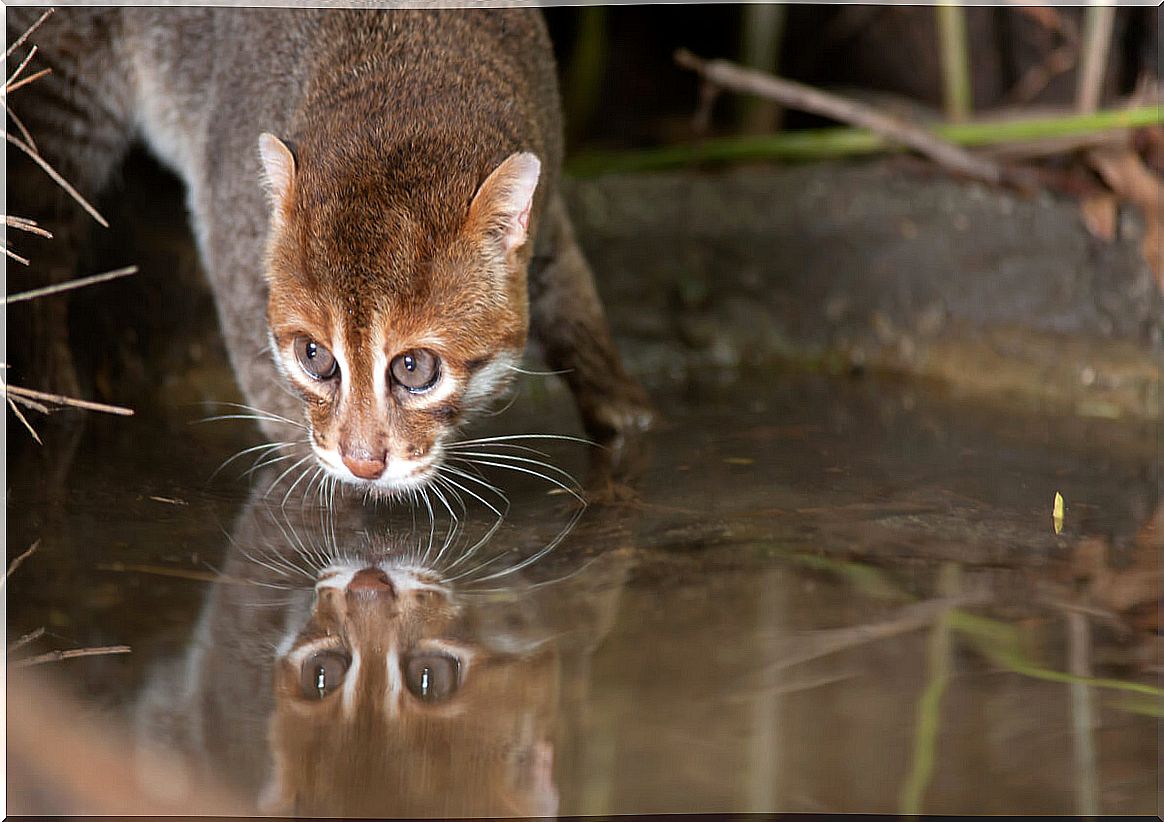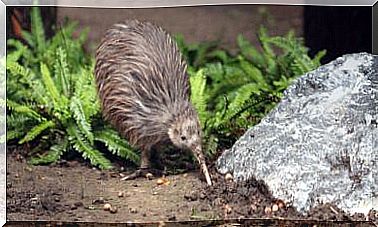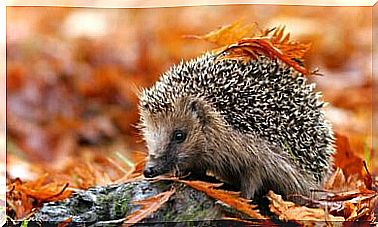Flat-headed Cat: A Fascinating Wild Cat

Among the most unknown wild cats is the flat-headed cat, a small carnivore from the Malaysian peninsula, Borneo and Sumatra. As its name indicates, its head is flattened, which differentiates it from other felines.
The flat-headed cat is also known as polecat, due to its similarity to these mustelids. In addition, it has the same preference for habitat, as it is usually found in tropical forests, swampy areas, marshes, lakes, streams, peatland forests, and riparian forests.
The flat-headed cat
Without a doubt, the most distinctive feature of this animal is its flat head. The species has a flattening on the skull, which makes its profile appear sharper and more cylindrical than the rest of the felid species.
It is a small cat, about 30 to 50 centimeters and less than three kilograms in weight. Its thick coat is completely reddish-brown, although it has a white belly.
The eyes are more bulging and are closer together than in domestic cats, almost close to the nose. This arrangement provides the animal with a better stereoscopic vision, that is, a greater ability to integrate the images that come from both eyes into a single three-dimensional image.
The jaws are strong and narrow, also adapted to hunting aquatic prey such as fish and frogs. Proof of this is the great length of their canines, whose main function is to tear meat.
Its fishing skills can be compared to its wild congener the fishing cat, although it is not uncommon for it to include crustaceans, mice and small birds in its diet.
The flat-headed cat also shares another characteristic with this species, and that is that its claws are not completely retractable and can be seen at all times. Its legs are adapted to the semi-aquatic environment with webbed toes.

An endangered species
Currently, the flat-headed cat is categorized as an endangered species by the IUCN. Their populations are in continuous decline and the number of total specimens does not reach 3,000 individuals. We go further, because in the mid-eighties the species was considered extinct, but it was rediscovered a decade later.
The main cause of threat is the destruction of their environment, as more than 70% of their original habitat has been converted into farmland, plantations and other types of human settlements.
Pollution and deforestation have degraded and fragmented the flat-headed cat’s environment, thus confining the species to small pockets. Hunting and overfishing also influence the survival of this species.
The importance of conserving small carnivores
The flat-headed cat is listed in Appendix I of CITES. Therefore, it is completely protected in most of its range. Hunting and trade in this species are prohibited in Indonesia, Malaysia and Thailand.
This feline is not the only carnivore in danger, as uncontrolled hunting and habitat destruction place many small and large carnivores in the jungles of Asia in a delicate situation.
In 2011 the first Malaysia Borneo Carnivore Symposium was held which brought together some 200 people to discuss and determine the most urgent needs for the conservation of Borneo carnivores. Among the agreed measures are:
- Improving communication between researchers, conservationists, and government authorities.
- A compilation of censuses of all Borneo carnivores and their current distribution pattern by species.
- The establishment of key areas for the protection or sustainable management by species.
- The identification of the most urgent research and conservation needs, combining all the discoveries discovered by species. For example, the impact of palm plantations on the genetic exchange of populations of flathead cats and other carnivores.

Planet Earth may still surprise us with the discovery of new species as peculiar as the flat-headed cat, but if we do not stop the effects of deforestation, pollution or replacement of ecosystems by human use, it is likely that future generations will lose the opportunity to know them.








